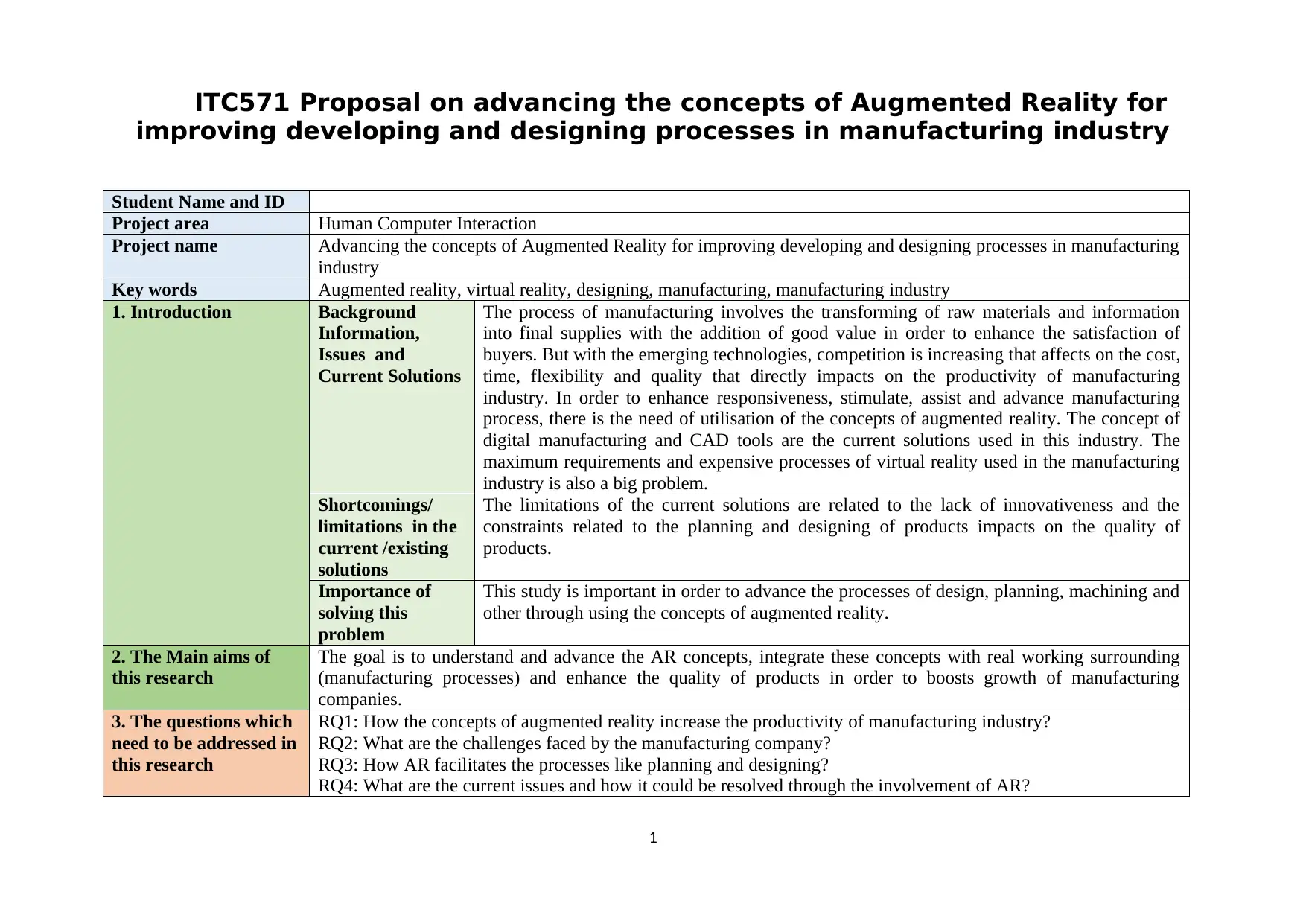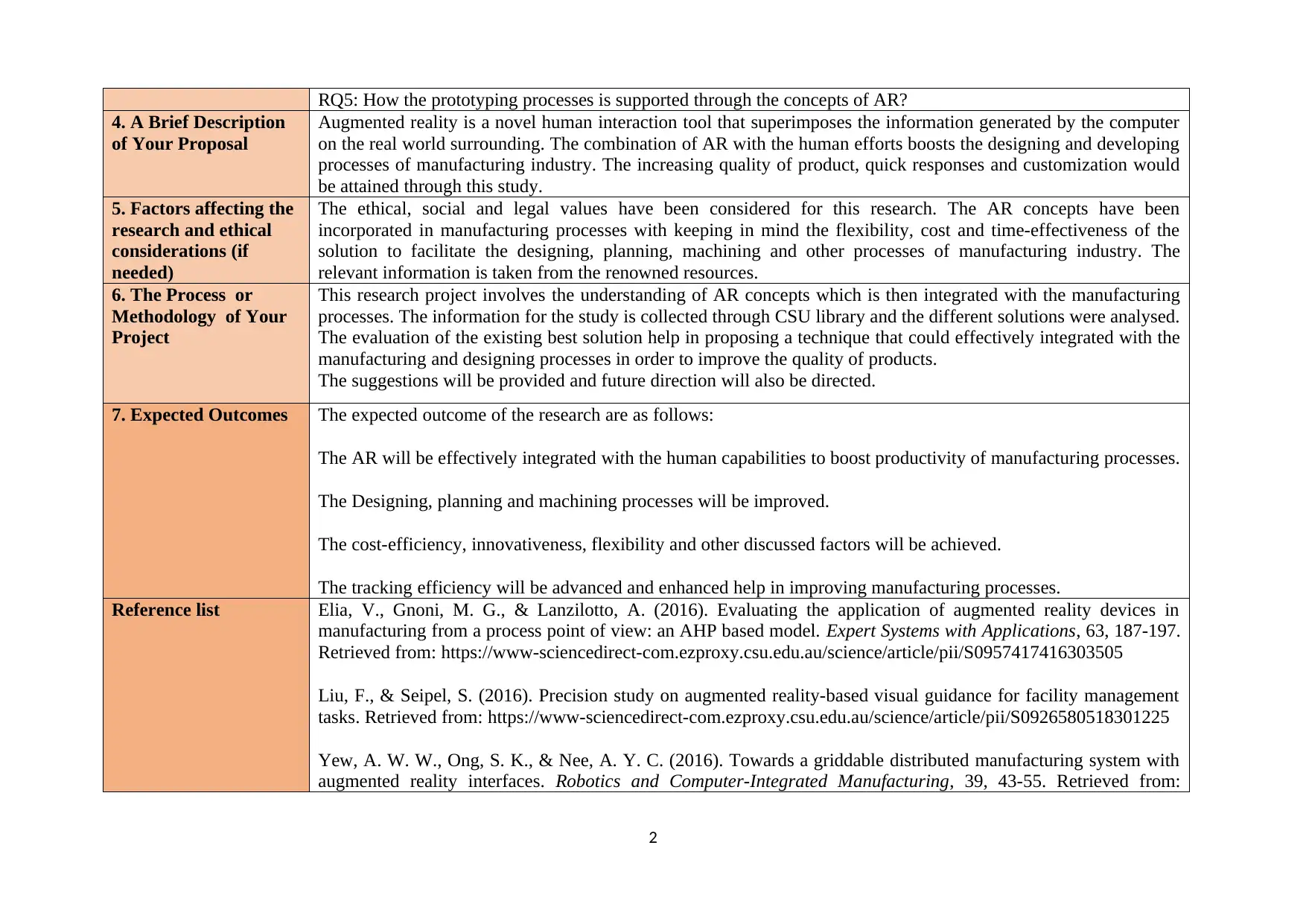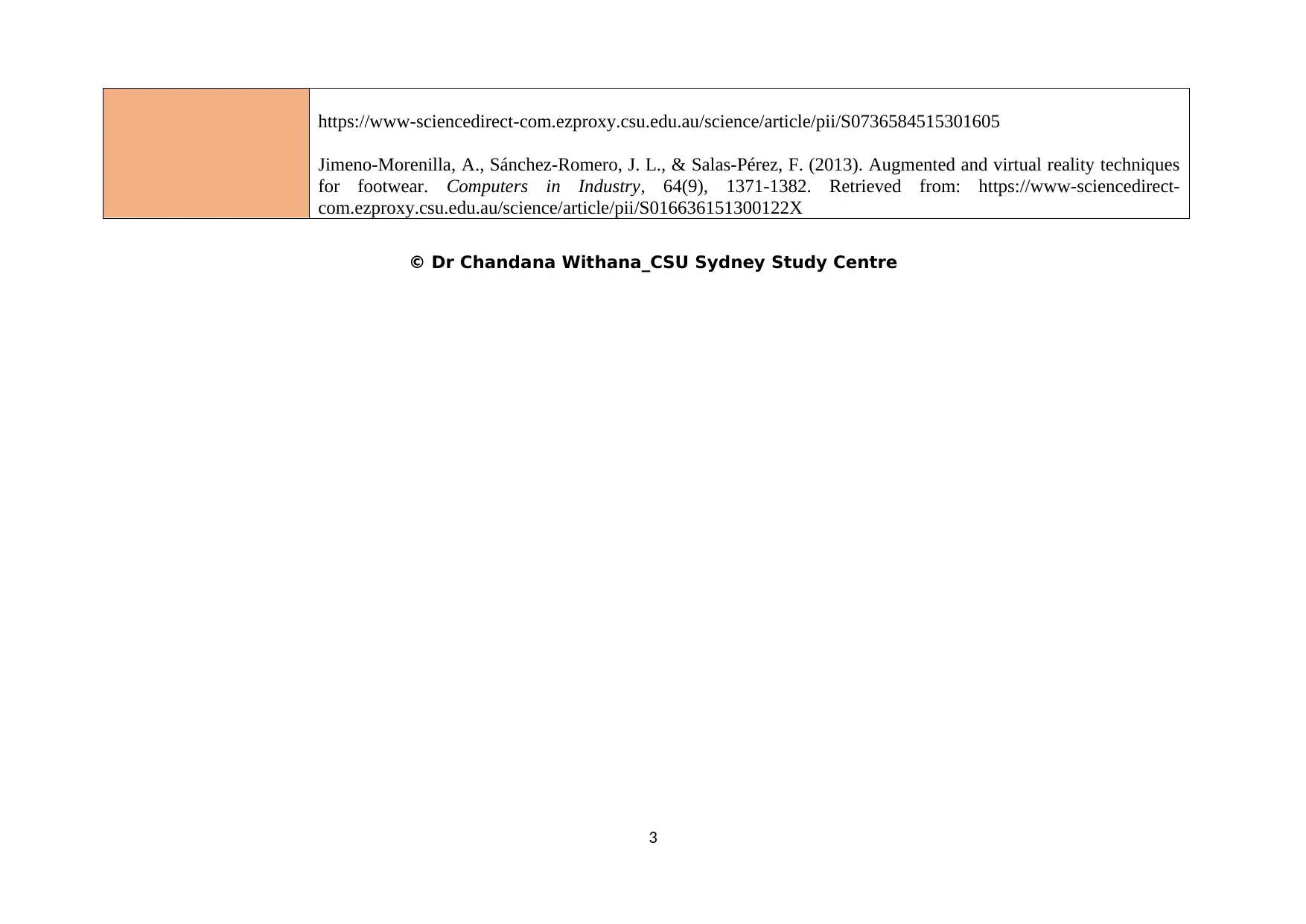ITC571 Project: Augmented Reality for Enhanced Manufacturing Design
VerifiedAdded on 2024/05/16
|3
|872
|96
Project
AI Summary
This ITC571 project proposal investigates the application of Augmented Reality (AR) to enhance design and development processes within the manufacturing industry. It addresses the limitations of current solutions like CAD tools and virtual reality, focusing on how AR can improve productivity, planning, and design quality. The research aims to understand and integrate AR concepts into real-world manufacturing environments, addressing challenges and proposing solutions for effective integration. The methodology involves analyzing existing solutions, collecting data from reputable sources, and proposing a technique to improve product quality and manufacturing efficiency. The expected outcomes include improved design, planning, machining processes, and enhanced cost-efficiency and flexibility in manufacturing through the effective integration of AR with human capabilities. The project also considers ethical, social, and legal aspects, ensuring a flexible, cost-effective, and time-efficient solution.
1 out of 3










![[object Object]](/_next/static/media/star-bottom.7253800d.svg)